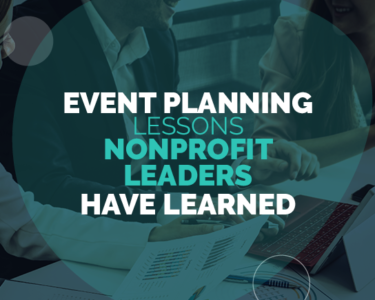Nonprofit leaders are in crisis. Things have been rough for a while, and as a person who has worked in nonprofits for most of my career, I know it was never an easy sector to work in.
But now, according to the Center for Effective Philanthropy’s 2025 State of Nonprofits report, things are looking particularly grim. Public trust and donor participation were already declining in 2023, and the concerns about burnout and staffing shortages reported in 2024 have continued, if not worsened.
Nonprofit leaders and staff alike are navigating an almost constant state of urgency, alongside a toxic and volatile political and policy environment.
So, what can we do to ease this burden and set ourselves up for success in the long run? We can focus on stories.
You might think that response is out of left field, and that’s fair, but answer me this: When is the last time you gave to a cause you cared about?
Whether it was money, time, or something else altogether, the thing that moves people to action is either their own story or one that resonates with them so much that they have no choice but to act.
I recently received a newsletter that said there would be more folks around the table at Thanksgiving this year. Why? Because fewer people are dying from cancer.
It was striking right out of the gate with the human element. And something so many of us can relate to — a full table at the holidays or one with very specific people missing.
You would do almost anything to have your people around the table again, right? So why not donate to research that will make that happen for someone else, someone whose story is similar to yours?
Pairing stories with striking data on the real human impact of something like cancer research or free counseling (funded by nonprofits) means people feel the weight. And when they feel, they move.
When used well, storytelling is a powerful reflective tool that brings clarity, connection, and transforms internal culture. And we definitely need cultural transformation at this moment.
The CEP report paints a vivid picture of what nonprofit leaders are up against: 90 percent express concern about burnout, with nearly as many reporting it significantly affects their staff.
Leaders are being forced to pivot constantly. As one nonprofit executive shared in the report, “It is tough to do business as usual when our world and our core values are being challenged at every turn.”
In this context, reflection is often treated as a luxury, but it is exactly what is needed most.
Reclaiming the ‘Why’
When storytelling is deeply rooted in the culture of an organization, it can provide space for leaders and their teams to connect with their mission and values, process experiences individually and collectively, and reclaim their agency.
They can also stay inspired and innovative, which is an important part of doing nonprofit work and doing it effectively.
This isn’t about just producing reports or web site copy, it’s about using story as a regular, reflective discipline. And it’s a little bit about helping leaders and staff imagine the world that they want to create, too, rather than just fighting against the difficulties and traumas of the one we currently inhabit.
Nonprofit staff can learn, heal, and advocate through stories and funders can stay informed about their real human impact through the stories those staff members pass on, when they are able to do so effectively. This buoys funder visibility of and connection to their impact, which can drive changes in practice that lead to more sustainable programs and services.
Without opportunities to reflect, nonprofit organizations lose more than morale. They lose perspective. They become more reactive and less strategic. The “why” behind their work becomes muddled under a mountain of deliverables. Staff start to disengage. The community voice gets lost.
This is not a capacity issue alone. It’s a narrative one. Nonprofits can’t pause long enough to reclaim or articulate their story. And when that happens, their power erodes.
Funders: You Have a Role to Play
The 2025 CEP report notes that many foundations are stepping up: increasing payout levels, offering emergency support, and issuing public commitments to equity. These are essential steps. But there is another, quieter opportunity that could have deep ripple effects: invest in narrative capacity.
Narrative capacity is the ability of nonprofits to not only share stories externally but to reflect, make meaning, and align internally around shared truths. It requires time, psychological safety, and skilled facilitation. None of this happens by accident.
By funding reflective storytelling practices, foundations can support nonprofit resilience without adding new programs, improve grantee-funder communication and trust, surface emerging insights from the field, and help nonprofits shape public perception and policy advocacy. Public perception and advocacy is especially critical for anyone concerned about equity and what that means for the health, safety, security, and economic prosperity of our communities.
So how could funders support reflective storytelling in practical ways? They could fund storytelling coaching or training for grantee staff and leadership, sponsor storytelling retreats or circles that promote healing and alignment, or offer space in grant reports for narrative reflection, not just metrics. They could also hire consultants who specialize in ethical and equity-centered storytelling, so that private information remains private and community members remain safe while lessons learned and program impacts are shared.
These investments don’t require millions of dollars. But they do require trust, creativity, and a commitment to real impact. There is no need to report on the number of meetings held or dollars spent, what we need are stories of human impact so that we can make real forward progress.
And nonprofit leaders don’t need to wait for funders to make the first move. You can begin incorporating story in your everyday work by using team meetings to reflect on transformational moments, carefully archiving community stories for greater connection with the communities you serve, and using stories to advocate for flexible funding and policy change.
In my experience, this work is both fun and effective — and as stories are collectively and collaborative told and archived, better outcomes are achieved, too.
The 2025 State of Nonprofits report doesn’t just diagnose a crisis. It also illuminates a path forward. Nonprofits are resourceful, resilient, and deeply committed to their missions. But commitment alone won’t prevent collapse. We need space to reflect. We need room to feel. And we need to tell the truth, not just in grant reports, but to ourselves and each other.
To funders: what would happen if your next grant included a storytelling stipend?
To nonprofit leaders: what clarity might emerge if you paused to name the story you’re in? What about the one you want to be in?
From reactive to reflective, that’s the shift we need. And storytelling can help us make it.
Chantell Frazier, Ph.D. is founder and CEO of Anansi Research. Find her on LinkedIn.
👇Follow more 👇
👉 bdphone.com
👉 ultractivation.com
👉 trainingreferral.com
👉 shaplafood.com
👉 bangladeshi.help
👉 www.forexdhaka.com
👉 uncommunication.com
👉 ultra-sim.com
👉 forexdhaka.com
👉 ultrafxfund.com
👉 bdphoneonline.com
👉 dailyadvice.us




